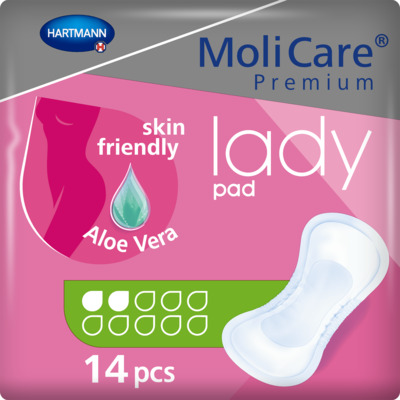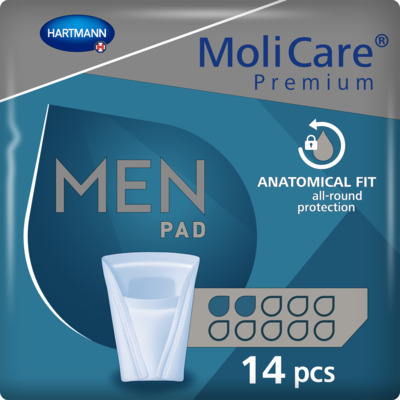Active living
What The Colour Of Your Urine Could Mean
Seeing odd-coloured urine after urinating can sometimes be a cause for concern. However, urine colour is often linked with your hydration level, what you have been eating and drinking, or any medication you may be taking. It is normal for urine to be darker in colour first thing in the morning and for the colour to become lighter throughout the day as you drink more fluids, diluting the concentration of the urine. Some urine colour changes can indicate an underlying health condition that may or may not require urgent medical attention, such as red or dark brown. Certain foods can alter this colour; for example, fava beans, blackberries, and beetroots can turn the colour of urine red or pink, and certain medicines can make urine appear very ‘vivid’ greenish-blue or orange.

What Colour Should Urine Be Normally?
Healthy urine is pale yellow in colour. This is due to the presence of urochrome, also known as urobilin, which is formed due to the breakdown of old red blood cells. This pigment in your urine naturally becomes more diluted as you increase your water intake. Order your free copy of our MoliCare information pack for more advice on diet.What the colour of your urine could mean
Colour of Urine – What Each Colour Indicates
If you’ve ever seen a urine colour chart, then you may already be familiar with some of the bladder problems in men or the various causes of urinary incontinence, for example.
On a quick note, if you are suffering from urinary incontinence, then these bladder-friendly drinks and continence pull-ups may help.
If you look at the urine colour chart, you will find that several urine colours fall under the umbrella of what’s considered “normal”, although there are cases where a specific colour or urine may indicate a health condition.
Urine Colours – See A Doctor If…
There is blood in your urine: This is typically a sign of kidney stones and urinary tract infections (UTIs). These health conditions are often accompanied by pain, ranging from moderate to severe. In some cases, there may be painless bleeding during and/or after urination which could indicate a serious health problem, like cancer.
You have orange or urine or dark brown urine: This could simply indicate dehydration, but if this doesn’t resolve after drinking plenty of fluids, then it could indicate that your kidneys or liver are not working as intended, particularly if your stool is pale and your skin and eyes look yellow.

Colour of Urine – Each Colour Explained
Clear Urine
Clear urine usually points to the fact that you’re drinking more water than necessary.
Even though it’s always a good health practice to stay adequately hydrated each day, attempting to ‘over-hydrate’ the body will actually deplete it of electrolytes, thus, leaving you dehydrated at the end of the day!
Clear urine is nothing to worry about, although if you have clear urine all the time, then this could be an indication that you’re consuming too much water – more than your body needs or can utilise – and that you need to cut back. With that said, if you are not consuming too much water but still see clear urine, then it may be best to consult a GP.
Yellowish/Amber Urine
●People whose B- vitamins intake is high may also see a more pronounced yellow colour and, in some cases, even a neon yellow colour.
Red/Pink Urine
Red or pink urine colours can indicate a health condition, but this can be caused by multiple factors, such as:
Consuming fruits that have naturally magenta or deep pink pigments. Prime examples include blueberries, rhubarb, and beetroots.
Certain medications can give your urine a reddish or pinkish hue. These include Senna and Rifampicin (Rifadin), which is an antibiotic.
Red or pink urine can indicate the presence of blood in the urine (known as haematuria), which could be due to kidney stones, a urinary infection, bladder and kidney tumours, or an enlarged prostate. If you’re not consuming any of the foods that may cause your urine to become red or pink and there is no obvious other cause, it is always best to consult with a healthcare professional to rule out the presence of blood in the urine
Orange Urine
There may be several factors causing orange urine, such as:
Being dehydrated.
Having medical conditions such as jaundice, which can cause light-coloured and faint orange stools because of bile entering the bloodstream due to problems with the liver or bile ducts.
Some medications can cause orange urine, including Phenazopyridine, a medication often prescribed to relieve pain and irritation to the urinary tract, Sulfasalazine, which is used to treat and manage some auto-immune conditions, and certain kinds of chemotherapy drugs.
Blue/Green Urine
Blue or green urine is usually related to something you have been consuming. In rare cases, it could indicate a health problem. For example:
This may be the result of food colouring, especially foods containing methylene blue dye. You’ll find this dye in a number of different sweets, drinks, and medications.
Certain medications can cause blue or green urine. These include Cimetidine, Amitriptyline, Indomethacin, Promethazine, and all B-vitamin supplements.
Medical investigations may cause green urine (or blue) as dyes are often used in medical tests involving the kidneys or bladder.
Specific medical conditions can cause colour of urine to turn blue or green. Pseudomonas aeruginosa, for example, a bacterial infection, may cause your urine to turn green, blue, or indigo purple.
Familial benign hypocalciuric hypercalcemia is another medical condition that can lead to green or blue urine. As a result, your calcium levels may become low-to-moderate, which can cause urine colours to change too.
Dark Brown Urine
This urine colour generally indicates dehydration. However, it could also be due to:
Medications with metronidazole, Nitrofurantoin, Chloroquine, Senna-based laxatives, and Methocarbamol.
Foods such as aloe, fava beans, or rhubarb, can change the colour of urine to dark brown.
Brown or tea-coloured urine may be a symptom of specific health conditions. One of these is rhabdomyolysis, a serious medical condition that causes the breakdown of muscle tissue. Another one is porphyria, where a build up of naturally-released chemicals in your bloodstream cause brown or rust-coloured urine.
Dark brown urine may also be a symptom of liver disease. This colour is due to a build-up of bilirubin if the liver can’t break it down properly.
Exertional haematuria is a term used to describe brown urine as a result of intense physical activity or exercise. While this isn’t unusual or considered a medical emergency, it’s important to monitor how your urine colours changes in the hours that follow. For example, dark brown urine usually resolves after a few hours of rest following exercise, especially if your water intake is normal. But if you’re seeing dark brown urine frequently after intense exercise or physical activity (especially if it doesn’t return to a normal urine colour after 48 hours), then it’s best to consult a health care professional.
Cloudy Or ‘Hazy’ Urine
If your urine colour is cloudy or hazy, then it could be due to:
A medical condition such as a urinary tract infection (UTI). It may also indicate problems with your kidneys and chronic diseases, either within the kidney or bladder, or both. In some cases, however, cloudy urine may indicate nothing more than dehydration, so a few extra glasses of water may resolve it.
If you’re seeing foams or bubbles (pneumaturia) along with cloudy urine, then it could be a symptom of a serious health condition, such as Diverticulitis, Crohn’s disease, or a fistula (a hole that has formed between the bowel and bladder).
If you are pregnant and notice cloudy urine, then this may be a symptom of a very serious condition known as Preeclampsia. If you suspect this to be the case, contact your nearest healthcare practitioner immediately and tell them if you have seen cloudy or bubbly urine since becoming pregnant or following pregnancy.
In some cases, if doctors are unable to diagnose why urine is foamy or bubbly, then this will be a higher cause for concern.
White Or Milky-Looking Urine
Certain medical conditions can make urine look white or milky.
Chyluria, for example, is a health condition in which a milky substance produced during digestion (chyle), is present in the urine. This usually occurs due to the onset of a parasitic infection which impacts the urinary tract and often the entire lymphatic system.
How Diabetes Affects Urine Colour
If you have diabetes, you may experience an increased sense of thirst, which leads to an increased frequency of urination. Your urine colour may take on a paler-than-usual appearance.
However, when diabetes is consistently well -managed, it doesn’t affect the colour of the urine.
How Pregnancy Affects Urine Colour
If you’re pregnant, you may feel the need to urinate more often due to the increased pressure on the bladder and hormonal changes. You may experience this throughout the various stages of pregnancy. During the final stage, you may experience urine leakage as there is more pressure on the pelvic floor.
Some pregnant women experience dehydration frequently due to nausea and vomiting from morning sickness. If that’s the case, then you will likely produce less urine and it will be darker in colour. It’s a good idea to replenish those lost fluids and electrolytes to help bring your urine production and colour back to normal.

Factors That Can Increase the Likelihood of A Change in Urine Colour
Changes in the colour of urine that have occurred due to reasons other than certain kinds of foods or medication may signal a health problem. For example:
Older people tend to experience blood in the urine more commonly than their younger counterparts. So, men older than 50, for example, may see blood in their urine due to an enlarged prostate. Tumours developing within the bladder and kidney can also lead to blood in the urine which is, again, more common in older people.
People who engage in intense and prolonged exercise, including long-distance runners, may see blood in their urine after a race, which goes away after rest, sleep, and recovery.
You are at a higher risk of experiencing conditions such as kidney disease or frequent UTIs if any of your blood relatives, such as a sibling, parent, or grandparent, have experienced them. Both of these conditions can lead to blood in the urine.
Reassurance About Urine Colours
In most cases, an unusual urine colour may be nothing to worry about. It could be due to something you ate or some medication you are currently taking. If this is the case, your urine colour will return to normal within a few days of finishing whatever is causing the discolouration.
While this article covers colour of urine meaning to a certain degree, it is always best to consult a qualified health professional if you believe the colour of your urine might be a symptom of a health condition. If you need assistance about collecting a urine sample, follow this guide.
FAQs
What colour is unhealthy urine?
Unhealthy urine can be various colours, including dark yellow, orange, pink or red, brown, or even have a blue or green tint.
What colour is your urine when your kidneys are failing?
In kidney failure, urine may be brown, deep yellow, or red, often due to the presence of blood. There may also be a reduced output of urine due to the kidney’s inability to produce a normal volume of urine.
What are the abnormal colours of urine?
Abnormal urine colours include red or pink, which can indicate the presence of blood; dark brown or orange, which can indicate dehydration or liver issues; blue or green, which can indicate rare metabolic conditions or food dyes; and cloudy or murky, which can indicate an infection.
Does diabetes affect urine colour?
Diabetes itself doesn't directly change urine colour, but high blood sugar levels can lead to dehydration, concentrating the urine and making it appear darker in colour.
Sources

MoliCare® Premium Lady Pad 2 Drops
<h2>Skin Friendly Pant Liners</h2> <p>For women that experience slight incontinence and bladder weakness, across different age groups, it can be a challenge to find the right bladder weakness product that is easy to apply and wear without the worry of potential leakages. Fortunately, we understand this approach, hence why we are happy to offer our MoliCare® Premium Lady Pad 2 drops, that is skin-friendly, Aloe Vera applied, and comes with 14 liners per bag.</p> <h2>Slim and discreet liners</h2> <p>Whether dealing with stress incontinence or urge incontinence, these panty liners offer a discreet and easy solution on the go. Simply place the pad in your underwear and secure it with the adhesive strip for all-round protection. Available in different absorbency levels, MoliCare® bladder weakness products cater to all levels of bladder weakness, ensuring secure care.</p> <h2>Control Bladder Weakness</h2> <p>Enjoy the benefits of these body-shaped absorbent panty liners, designed for women with bladder weakness. The pads offer discreet, reliable protection with features including odour control and fast absorption.</p> <p>With a wide adhesive strip, you can comfortably fix the pad in your regular underwear, providing secure and comfortable fixation. The pads are skin-friendly, featuring soft, breathable materials, including foam cuffs, and a top sheet treated with Aloe Vera.</p> <p>Keeping your skin healthy is a priority, which is why MoliCare® Premium Lady Pads have a skin-neutral pH value of 5.5 and an antibacterial finish. They are also dermatologically tested, offering peace of mind.</p> <h2>Buy pant liners online</h2> <p>Never worry about running out with our convenient order service and fast delivery direct to your door. Enjoy free shipping on orders over £50.</p> <p>If you need assistance, our professional customer service team is here to support you in choosing the right product. Reach out to us today at 0800 028 9470 and experience the comfort and reliability of MoliCare® Premium Lady Pads.</p>
MoliCare® Premium Men Pad 3 Drops (ISO 441ml)
<p><strong>Reliable and discreet incontinence pads for men with an instant-dry feeling</strong></p> <p>Bladder weakness is difficult to live with, the last thing you want to worry about is incontinence protection. That’s why our best-ever MoliCare® premium MEN Pad 3 drops offer an <strong>all-round protection</strong> that keeps everything dry and comfortably in place while fitting discreetly in your regular underwear.</p> <p>The incontinence pad for men quickly <strong>removes urine from the surface up to 86 %* faster than before</strong> and neutralises unpleasant odours to leave you feeling instantly dry and in control thanks to the new <strong>MoliCare SkinGuard</strong>®<strong> Absorbent Core Technology</strong>. This skin-friendly technology not only helps you feel up to 90 %* drier than previous MoliCare® premium<strong> </strong>MEN pads, it also helps to maintain healthy skin and preventing irritation.</p> <p><strong>Engineered for the male anatomy</strong> and dermatologically tested for maximum skin compatibility, these male urinary pads do not contain colour, perfume or latex making them environmentally friendly too.</p> <p>*Compared to last generation</p>
MoliCare® Pad 4 Drops
<h2>Handy MoliCare incontinence pads to carry on the go</h2> <p>Our MoliCare® Pad 4 Drops are an essential product for those experiencing slight incontinence, allowing you to regain control and live your busy and active life without the interference of bladder weakness. Designed for both men and women, this incontinence pad for men and women offers exceptional dryness and protection, ensuring your comfort and confidence.</p> <h2>‘Barely There’ Reassurance and Reliability</h2> <p>The MoliCare® Pad 4 Drops are slimline, discreet, and adjusted to fit your body seamlessly. It fixes securely inside your underwear, providing a ‘barely there’ comfort feel. With its soft and skin-kind fabric, along with a wide adhesive fixing strip on the backsheet, you can go about your day with the assurance of being protected against leakages.</p> <p>The absorbent core effectively prevents your skin from becoming too moist, while the elastic anti-leak edging adds an extra layer of security and peace of mind. Say goodbye to any worries about odours, as the MoliCare® Pad 4 Drops also neutralises odours to keep you fresh and confident throughout the day. Don't let incontinence hold you back from living life to the fullest.</p> <p>Ordering your MoliCare® Pad 4 Drops is hassle-free, as we offer fast delivery direct to your door. With our price match promise, you can trust that you're getting the best value for your money. Plus, enjoy free delivery on all orders over £50.</p> <p>If you need assistance in finding the perfect incontinence product for your needs, our friendly customer care team is here to help. Don't hesitate to reach out to us at 0800 028 9470. Take control of your life with the reliable protection and comfort of the MoliCare® Pad, alongside other <a href="https://www.hartmanndirect.co.uk/incontinence-products/incontinence-pads" style="color:#0563c1; text-decoration:underline">incontinence pads</a>.</p>
